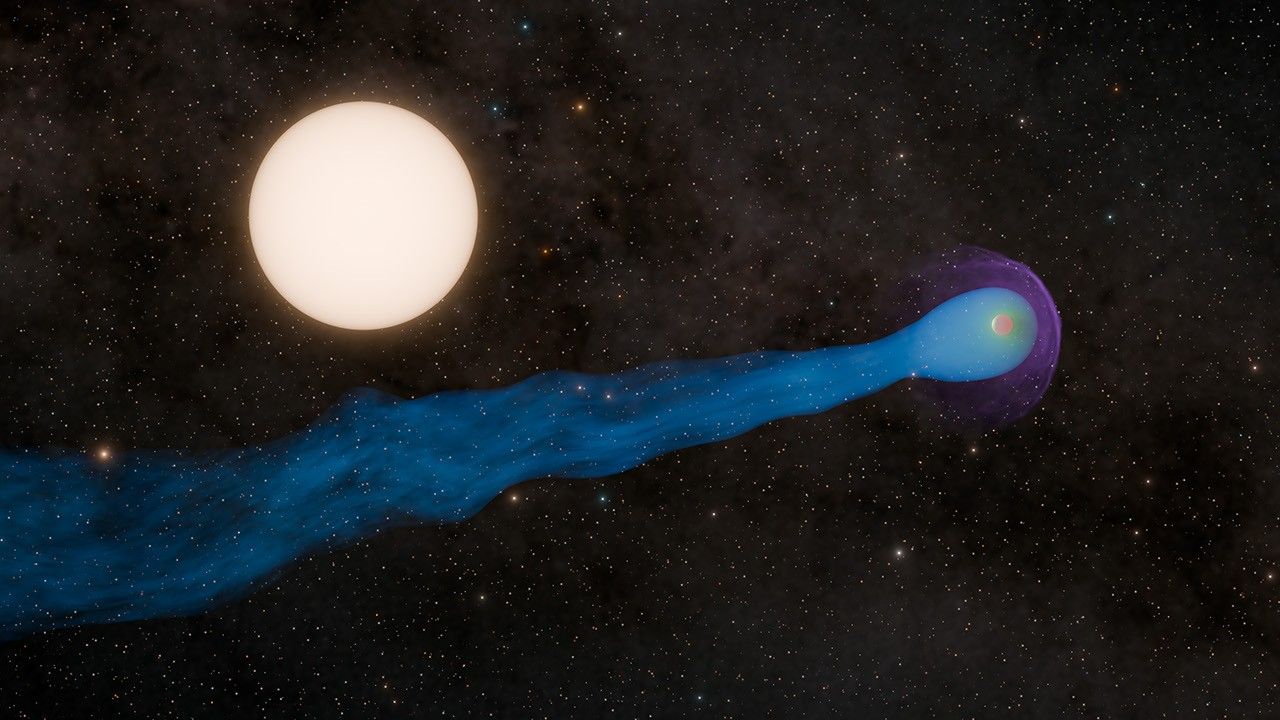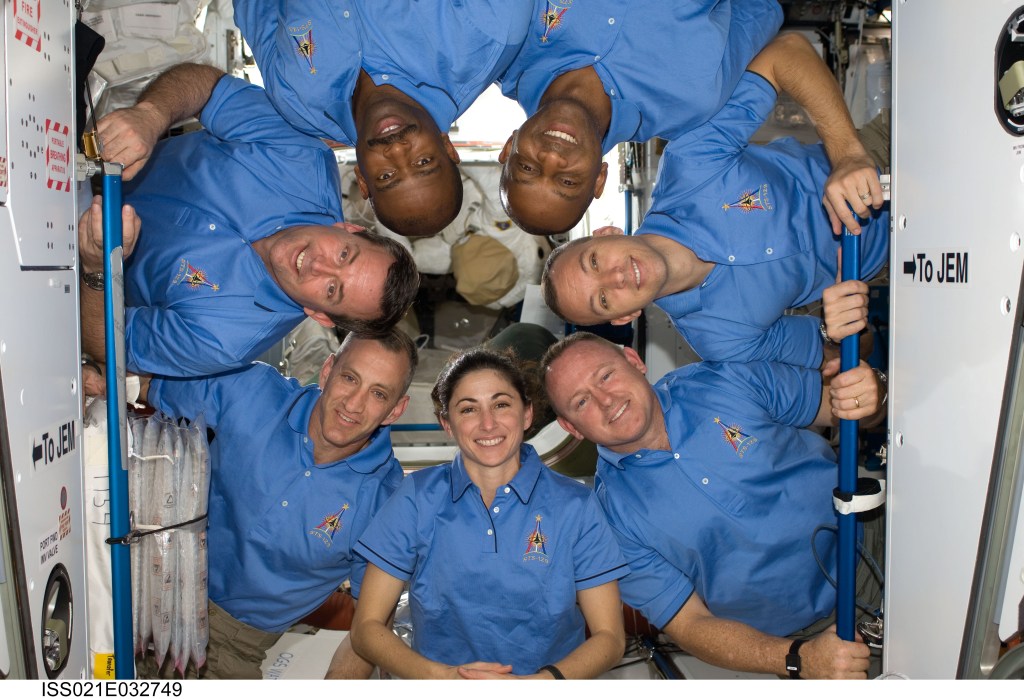
STS-110
The STS-110 mission crew prepared the International Space Station for future space walks by installing and outfitting a 43-foot-long Starboard side S0 truss and preparing the Mobile Transporter. The mission served as the 8th ISS assembly flight.
orbiter
mission duration
Launch
Landing

Mission Facts
Mission: International Space Station 8A
Space Shuttle: Atlantis
Launch Pad: 39B
Launched: April 8, 2002, 4:44:19 p.m. EDT
Landing Site: Kennedy Space Center, Florida
Landing: April 19, 2002, 12:28:08 p.m. EDT
Runway: 33
Rollout Distance: 9,576 feet
Rollout Time: 70 seconds
Revolution: 171
Mission Duration: 10 days, 19 hours, 42 minutes and 44 seconds
Miles Traveled: 4.5 million
Crew
Michael J. Bloomfield, Commander
Stephen N. Frick, Pilot
Jerry L. Ross, Mission Specialist
Steven L. Smith, Mission Specialist
Ellen Ochoa, Mission Specialist
Lee M. E. Morin, Mission Specialist
Rex J. Walheim, Mission Specialist
Launch Highlights
The original April 4 launch was terminated about an hour into tanking operations due to a leak in a liquid hydrogen vent line of the Mobile Launcher Platform at Pad B. The launch was rescheduled for April 8. The repair work involved welding a 10-inch wide, two-piece aluminum clam shell sleeve around the 16-inch diameter line. The countdown on April 8 went into an unscheduled hold at the 5-minute mark due to data dropouts in a backup Launch Processing System. The Launch Processing System team reloaded the required data and the countdown resumed. Liftoff occurred with 11 seconds remaining in the launch window.
Mission Highlights
The launch marked a milestone as Mission Specialist (MS) Jerry Ross became the first human to fly in space seven times, breaking his own and other astronauts’ records of six space flights. His two spacewalks gave him a total of 58 hours and 18 minutes, surpassed only by Russian cosmonaut Anatoly Solovyev in human space flight history.
Installation of the S0 truss was the primary objective and began with removal of the truss from Atlantis’ payload bay. Mission Specialist Ellen Ochoa lifted it out with the station’s robotic arm and maneuvered it onto a clamp at the top of the Destiny Lab. The truss contains navigational devices, computers, cooling and power systems needed to attach additional laboratories to the complex. Four spacewalks were required for the task. The truss will serve as a platform on which other trusses will be attached and additional solar arrays will be mounted to form a 356-foot-long space station.
Between and during spacewalks, shuttle and ISS crew members transferred experiments and supplies between the shuttle and the station. They also transferred oxygen from the shuttle to one of four high-pressure gas tanks, used on the Quest Airlock to repressurize the module after spacewalks. Overall, 100 pounds of oxygen and 50 pounds of nitrogen were transferred.
Initial tests of the movement of the Mobile Transporter were successful. ISS Flight Engineer Walz commanded the transporter, via a laptop computer, to move to a work site 17 feet down a rail spanning the 44-foot-length of the girder, then a second site and back to the first. Automatic latching did not occur due to minute lifting of the rail car but was accomplished by manual commands. Other transporter systems functioned perfectly.
Tasks not accomplished on the mission were removal of the balky bolt from the backup cable on the Mobile Transporter and installation of a gas analyzer on the truss. The gas analyzer, considered low priority on the flight, proved to be faulty.
EVA No. 1: 7 hours, 48 minutes — After the temporary latching, MS Rex Walheim and MS Steven Smith began the first of four spacewalks to electrically and structurally mate the truss to the station. The spacewalking pair attached two of four mounting struts onto Destiny, deployed trays of avionics equipment and cables connecting Destiny to the truss, attached an umbilical system from the truss to the Mobile Transporter, and secured critical power connections. Walheim was the first spacewalker to use the stations’ Canadarm 2 as a cherrypicker, maneuvering to different areas for the assembly work. Smith operated as a “free-floater,” tethered to the Station and other work sites around the truss. From the aft flight deck of the shuttle, Ross and ISS Flight Engineer Carl Walz helped choreograph the spacewalk.
EVA No. 2: 7 hours, 30 minutes — MS Jerry Ross and MS Lee Morin bolted the final two struts of the S0 truss to the Destiny Lab. Morin used Canadarm2 to work while Ross was tethered to the Station. The two removed support panels and clamps from the truss, used during launch, then installed a backup device with an umbilical reel for the Mobile Transporter railcar. A restraining bolt that needed to be removed did not perform as expected and was left for a later spacewalk.
EVA No. 3: 6 hours, 27 minutes — MS Smith and MS Walheim released the claw that initially held the truss to the Lab. They also reconfigured Canadarm 2 connectors for electricity from the Lab to be powered by the truss. Smith worked from the end of the shuttle’s robotic arm while Walheim was the free-floater, tethered to the station. This was Smith’s seventh spacewalk, second to Ross. Smith and Walheim also released clamps that secured the Mobile Transporter to the truss. A task to attach the Airlock Spur, a 14-foot ladder, from the truss to the Quest Airlock was delayed to the fourth EVA.
EVA No. 4: 6 hours, 37 minutes — MS Ross and MS Morin installed the 14-foot beam, the Airlock Spur, from the S0 truss to the Quest Airlock. The beam will provide a quick pathway for future spacewalkers working on truss assembly. Ross tested switches on both sides of the truss for future truss assembly. He and Morin installed floodlights on the Unity connecting Module and Destiny Lab to provide illumination for future spacewalks. Other activities included attaching a work platform on the station for future construction work, installing electrical converters and circuit breakers, and attaching shock absorbers to the Mobile Transporter railcar. Ross used the Canadarm 2 for his work while Morin was the free-floater, tethered to the station.
STS-110
Resources
Shuttle News
Retired Space Shuttle Locations
Shuttle Atlantis – Kennedy Space Center Visitor Complex Shuttle Discovery – Steven F. Udvar-Hazy Center Shuttle Endeavour – California Science…
Read the Story














































